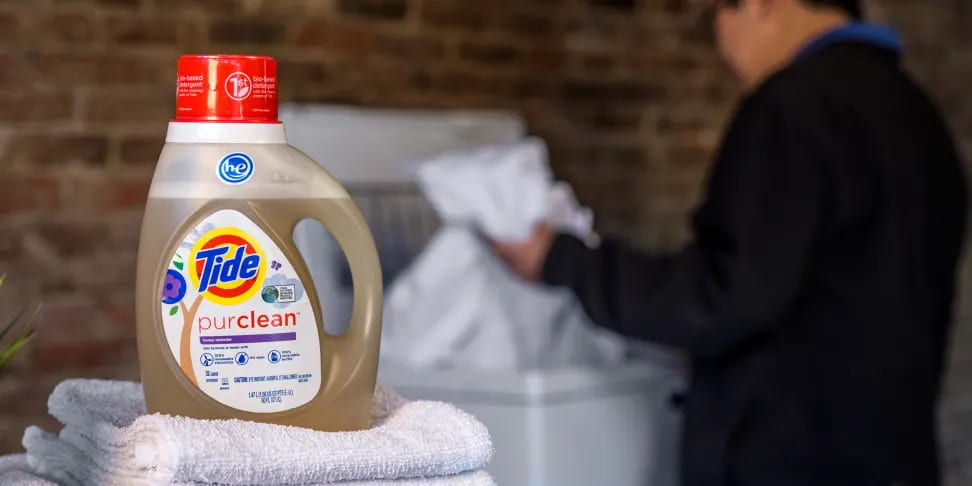Greenwashing 101
Have you ever bought a product thinking it was good for your health or the environment, only to find out it was bad for both? If so, this is not your fault. Companies are expert marketers and can convince consumers to invest in products that are not sustainable by tricking them into believing that they are. This is the concept of “greenwashing.” The Green Business Bureau defines “greenwashing” as “making a company’s environmental credentials look better than they are.” Greenwashing happens when a company’s marketing materials make its operations appear more environmentally friendly than they are. It can be as complex as working around laws that allow for the absence of honesty in ingredients. Furthermore, it can be in a form that is as simple as the packaging for your favorite body wash.

Image by Dana Abraham via https://www.thequalityedit.com/articles/native-body-wash-review
One of the most prominent examples of greenwashing is the well-known Native brand of body care products. Their packaging claims to have simple ingredients with a chart that explains what each ingredient is used for, intending to gain the trust of its users. However, the ingredients leave out key factors that are very easy for the consumer to miss. One of the more obvious misleading ingredients is “fragrance.” Depending on the soap you are choosing, Native will state that the fragrance is simply the scent you chose. However, when a company lists fragrance as an ingredient in their products, they are legally allowed to only list it as a fragrance. This means that all of the ingredients that are used to make fragrances do not have to be mentioned. This can and will include hundreds of chemicals that are harmful to the environment and your skin. The Environmental Working Group reveals that over 3,000 harmful ingredients are hiding behind the fragrance label: “Of the 3,163 chemicals listed, several stand out as particularly toxic: phthalates, octoxynols, and nonoxynols. Phthalates are potent hormone disruptors linked to reproductive system birth defects in baby boys. Octoxynols and nonoxynols break down into persistent hormone disruptors, as well.” Babies are also susceptible to the effects of these chemicals, not just adults. This exemplifies why fragrance should not be included in the ingredient list. If at all possible, fragrance should be left out of your products. If you can’t avoid it, look for a product that has a fragrance listed lower on the ingredient list. The lower an ingredient is on a list, the less prominent it is in a product.
Tide and other brands like it have also been accused of greenwashing, falsely claiming that their products are environmentally friendly when they aren’t. Tide sells a line of laundry detergent, Purclean, that claims to be plant-based. It has a clear plastic jug (as opposed to its opaque designs) with a green sticker to give the feeling of sustainable packaging. In reality, the packaging is still made of plastic and lies next to the other products on the shelf that have been proven to have major environmental disadvantages. What is the point of creating one line of presumably “sustainable” ingredients and packaging if the rest of their product line resembles none of those environmentally cautious values? In Cole v. The Procter & Gamble Company filed in New York federal court, the 13-page lawsuit says, “Though the PurClean label displays a USDA BioPreferred Bio Certified Seal, which indicates the product contains 75 percent biobased content, this information is in small font and difficult to read.” Further, it is not made clear to consumers that the words “biobased” and “plant-based” are not interchangeable, as “plant-based” is “more specific than biobased.” Ultimately, the solution to greenwashing lies in a combination of improved industry standards, government regulations, and individual actions. We must demand more from companies, encourage transparency in the supply chain, and make sustainable choices whenever possible.

Image by Chris Thomas via https://reviewed.usatoday.com/laundry/news/new-green-laundry-detergent-wears-a-familiar-label
So how do we, as consumers, find a way to identify when a product is truly beneficial to the environment and non-harmful to our skin? There are a few apps that can help consumers determine if the ingredients in a product are “clean.” These apps include Yuka, Think Dirty, and others. Unfortunately, some of these apps have been shown to miss some key harmful ingredients to be cautious of since they are being paid to list products as “clean.” Do not let that steer you away from using them. It is still very useful for beginners to utilize. One app that stands out from the rest is Bobby Approved. It is a free app that puts the harmful ingredients in red to indicate them. Once you get the hang of identifying ingredients, it is encouraged that you do your own research and start identifying harmful ingredients on the products you buy. As consumers, we have the power to make informed decisions and hold companies accountable for their deceptive marketing practices. By choosing to buy from companies that are transparent about their ingredients and sustainable practices, we can support businesses that prioritize the health of people and the planet. Together, we can drive change and promote a more sustainable and healthy future for all.
Another crucial aspect of sustainability is affordability. While many sustainable products may be more expensive, it’s important to recognize that not everyone has the financial resources to invest in eco-friendly options. This is a systemic issue that must be addressed through policy changes and broader societal shifts toward a more equitable distribution of resources. However, for those who may not be able to purchase sustainable products, it’s important to remember that reducing waste and recycling as much as possible can still have a significant impact. Choosing to reuse items, buying secondhand, and properly disposing of waste can all contribute to a more sustainable lifestyle. If you find out an item you use is not sustainable, it is important to still finish using it and not let it go to waste. Overconsumption is just as big of an issue.
Ultimately, sustainability is not just about protecting the environment; it’s also about promoting economic, social, and environmental justice. We can make progress toward a more just and environmentally responsible future for all people if we make sustainability a top priority in every aspect of our lives.


